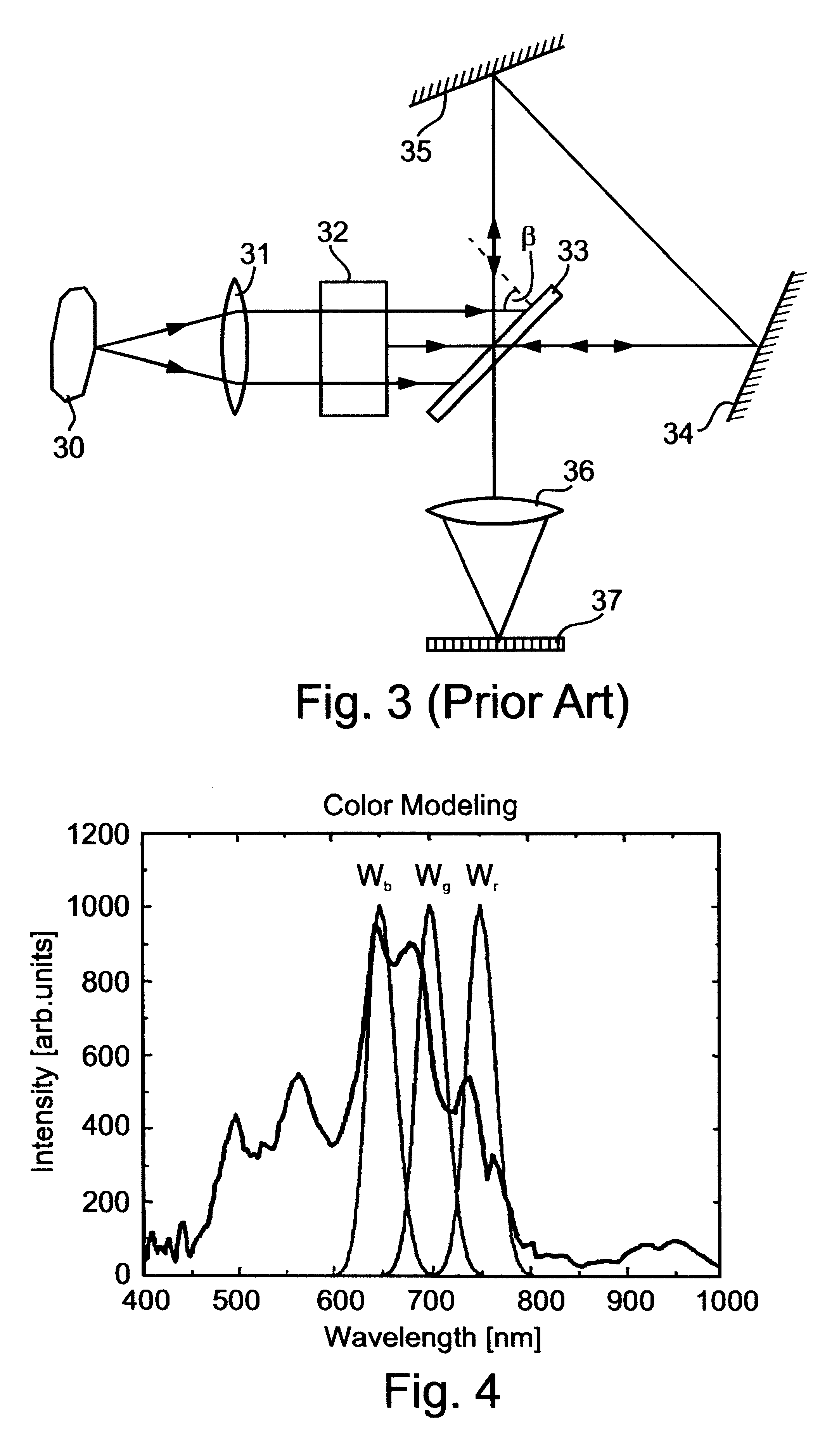Spectral bio-imaging data for cell classification using internal reference
a spectral bioimaging and cell technology, applied in the field of spectral bioimaging data, can solve the problems of large size and configuration of remote sensing spectral imaging systems, limited use of air and satellite-born applications, and inability to choose, prior to making the measurement, and a desired region
- Summary
- Abstract
- Description
- Claims
- Application Information
AI Technical Summary
Benefits of technology
Problems solved by technology
Method used
Image
Examples
Embodiment Construction
Reference in now made to the following examples, which together with the above descriptions, illustrate the invention.
Materials and Methods
May Grunwald Giemsa (MGG) Staining of Peripheral Blood Specimens
Peripheral blood was obtained from normal healthy individuals and from patients with typical acute lymphocytic leukemia (ALL), chronic lymphocytic leukemia (CLL), infectious mononucleosis (IM), plasma cell lymphoma (PCL), prolymphocytic leukemia (PLL) and Sezary syndrome (SEZARY), which were diagnosed according to established criteria. The patients did not receive chemotherapy for at least 3 months before obtaining the samples.
Fourier-Transform Multipixel Spectrometry System for Microscopy
The SPECTRACUBE.TM. system (Applied Spectral Imaging (ASI) Ltd., Industrial Park, Migdal Haemek, Israel) was used for spectral imaging of the samples. The SPECTRACUBE.TM. system employed includes a Sagnac interferometer which is a particular type of triangular interferometer (see FIG. 3 above) and h...
PUM
| Property | Measurement | Unit |
|---|---|---|
| Length | aaaaa | aaaaa |
| Length | aaaaa | aaaaa |
| Length | aaaaa | aaaaa |
Abstract
Description
Claims
Application Information
 Login to View More
Login to View More - R&D
- Intellectual Property
- Life Sciences
- Materials
- Tech Scout
- Unparalleled Data Quality
- Higher Quality Content
- 60% Fewer Hallucinations
Browse by: Latest US Patents, China's latest patents, Technical Efficacy Thesaurus, Application Domain, Technology Topic, Popular Technical Reports.
© 2025 PatSnap. All rights reserved.Legal|Privacy policy|Modern Slavery Act Transparency Statement|Sitemap|About US| Contact US: help@patsnap.com



